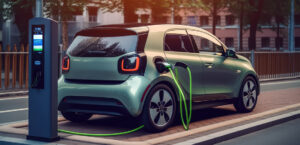
“OTP Leasing, the largest leasing company in the Ukrainian market, has announced the launch of a new EUR20 million financing program for hybrids and electric cars in Ukraine with 10% cashback through a grant.
“We hope to sell this product in about 200 showrooms in Ukraine. I want to visit the largest ones in Kyiv and the main regional ones this year. Because we need to sell 20 million euros under this program and distribute 2 million euros in grants,” OTP Leasing CEO Andriy Pavlushin wrote on Facebook.
According to him, the program provides for the leasing of cars to legal entities with a breakdown of payments for three to four years and a wide range of models: from a small Citroen to a large Range Rover, and also covers “soft hybrids.”
The company’s CEO hopes that the program will be further enhanced by the opportunity for its participants to refund 20% VAT on hybrids.
He noted that OTP Leasing will conduct trainings for showroom salespeople and has started this work with VIDI Auto for Business, which covers such models as Suzuki, Toyota, Lexus, Peugeot, Nissan, Range Rover/Land Rover, Volvo, Ford, MG, and Jeep.
“OTP Leasing is a subsidiary of the Hungarian OTP Bank. According to the EBRD, the company with a leasing portfolio of about UAH 15 billion at the end of the third quarter of 2024 occupied about 40% of the Ukrainian market.
In the first quarter of 2025, OTP Leasing’s revenue decreased by 20.8% compared to the first quarter of 2024 to UAH 383.1 million, while net profit increased 2.3 times to UAH 346.0 million.
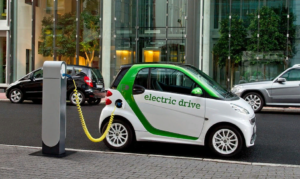
Sales of used electric vehicles in Ukraine in May increased by 40% compared to the same month in 2024, to over 4,700 units, according to UkrAvtoprom on Telegram.
This volume is actually equal to the figure for April this year.
The average age of such cars was five years.
The top ten used electric cars on the market in May were Tesla Model Y – 544 units; Nissan Leaf – 515 units; Tesla Model 3 – 467 units; KIA Niro EV (322 units); Hyundai Kona Electric (265 units); Chevrolet Bolt (218 units); Volkswagen e-Golf (211 units); Renault Zoe (204 units); Tesla Model S (180 units); and Audi E-Tron Sportback (131 units).
According to the association, in January-May, Ukrainians purchased more than 20,600 imported used electric vehicles, which is 30% more than in the same period in 2024.
As reported, in May, demand for new electric cars grew by 93% compared to the same month in 2024, to 1,257 units, which is also 35% more than in April this year, and in January-May, their registrations increased by 5% compared to the same period last year, to over 4,200 units. units
Last year, according to UkrAvtoprom, registrations of electric vehicles (new and used) increased by 38% compared to 2023, to 51,700 units, including passenger cars by 37% to 50,458 thousand, commercial vehicles by 64% to 1,264 thousand, and two electric buses were also registered. The share of new vehicles was 20%.
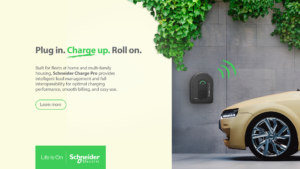
– The open solution provides fast installation and optimizes reimbursement processes to support fleet electrification.
– Minimizes power outages to accelerate the development of charging infrastructure in multi-family buildings and private homes.
– Remote monitoring through one easy-to-use mobile application.
Schneider Electric, a leader in digital transformation in energy management and automation, has launched Schneider Charge Pro, a reliable, energy-efficient electric vehicle (EV) charging solution in Europe to accelerate the adoption of electric vehicles among commercial fleet and apartment building owners. In line with the EU’s Energy Performance of Buildings Directive (EPBD), which requires the modernization of EV chargers by 2027, Schneider Charge Pro aims to address key barriers to growth in a complex and fragmented market landscape as a comprehensive, affordable solution for electric mobility.
More than just a charging station, Schneider Charge Pro is part of a fully integrated turnkey solution that simplifies the charging process from start to finish, making it easy for charging point operators (CPOs) and building owners to upgrade or install new EV charging stations, and easy and smooth for electricians to install. The solution also comes with open system software that efficiently tracks charging times, simplifying the process of reimbursing CPOs for employees who charge EVs that are part of a residential complex’s fleet.
This open solution is complemented by two new products designed to provide fast and reliable access to electric vehicle charging for cars, vans and other electric vehicles. The EVCE MFH solution, designed specifically for multifamily buildings, manages electricity loads in real time, allowing large numbers of EVs to be charged without overloading or disrupting power supply to tenants or the building. This is supported by a new cloud-based remote monitoring tool that allows for off-site pre-commissioning and faster on-site commissioning through a single, intuitive mobile app.
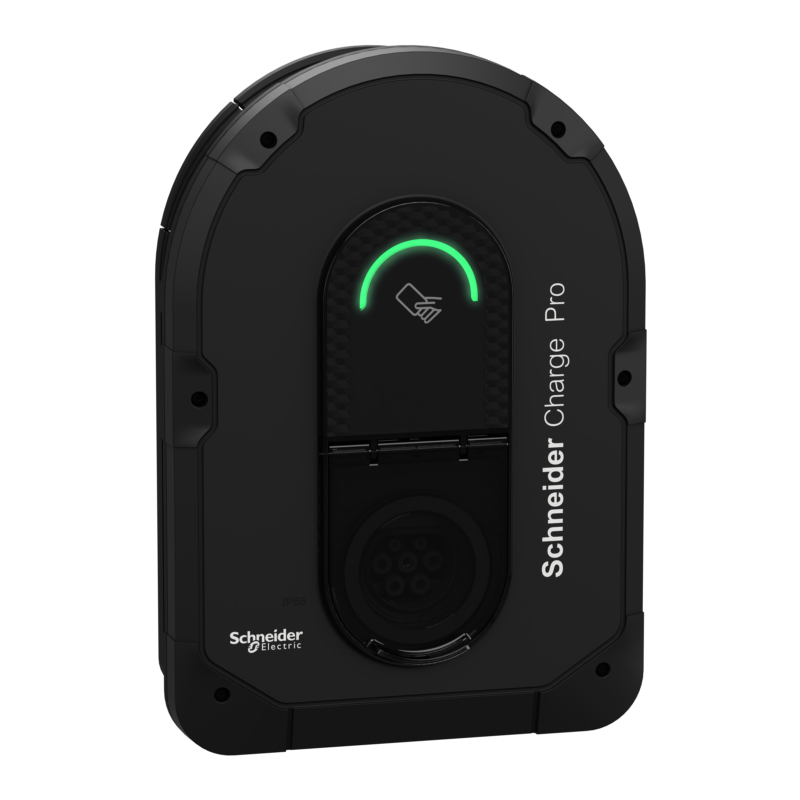
“As the market and regulatory environment rapidly evolves, Schneider Electric continues to lead the way in the new energy era,” said Nadezh Petit, Chief Innovation Officer at Schneider Electric. “Schneider Charge Pro builds on our century-long legacy of energy management innovation by offering an open, affordable and efficient EV charging solution designed to enable companies to easily electrify their fleets. By simplifying the adoption of electric vehicles for fleet operators, building owners, electricians and apartment buildings, we ensure compliance with EU regulations while helping companies accelerate their electrification goals, move forward and make the transition to sustainable energy.”
The Schneider Charge Pro electric vehicle charging solution is now available in France, Ukraine, and Hong Kong, with more countries to follow within a year.
To obtain the brochure, please follow this link.
***
About Schneider Electric
Schneider’s purpose is to create impact by empowering everyone to make the most of our energy and resources, ensuring progress and sustainability for all. We call it Life Is On.
Our mission is to be a trusted partner in sustainability and efficiency.
We are a global technology leader, bringing world-class expertise in electrification, automation and digitalization to smart industries, reliable infrastructure, future-proof data centers, smart buildings and intuitive homes. Drawing on our deep industry expertise, we provide integrated end-to-end AI-enabled industrial IoT solutions with connected products, automation, software and services, creating digital twins to drive profitable growth for our customers.
Ourmain resource is our 150,000 employees and more than a million partners operating in more than 100 countries to ensure proximity to our customers and stakeholders. We support diversity and inclusion in everything we do, guided by our meaningful purpose of a sustainable future for all.
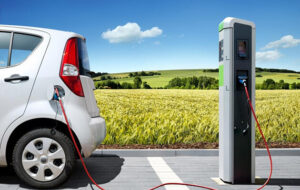
Initial registrations of electric vehicles (new and used) in Ukraine in February 2025 increased by 14% compared to February 2024 – up to 4,488 thousand units, UkrAutoprom reported on its Telegram channel.
Compared to January of this year, when 3,637 thousand electric vehicles were registered, the demand for them increased by 23%.
At the same time, according to the Association, the bulk of registered electric vehicles last month were passenger cars – 4,360 thousand units, of which 632 units were new (31.7% less than in February 2014), and 3,728 thousand were used (26% more).
Among the 128 commercial electric vehicles, 9 were new (in February 2014, two out of 43 units were new).
Thus, the share of new cars in the total registration of electric vehicles in February decreased to 14.3% compared to 24% in February 2024 and 18.8% in January this year.
The top five new electric vehicles on the market in February were BYD Song Plus EV – 115 units; Zeekr 001 – 65 units; Zeekr 7X – 41 units; Volkswagen ID.4 – 56 units, ZEEKR 001 – 46 units and Volkswagen ID.Unyx – 45 units.
The top five newly registered used electric vehicles were Tesla Model Y – 430 units; Tesla Model 3 – 429 units; Nissan Leaf – 407 units; Hyundai Kona Electric – 245 units; and KIA Niro EV – 231 units.
A significant decline in sales of new electric vehicles is also noted by the AUTO-Consulting information and analytical group – according to its data, in February, a decrease of 37% was recorded (with an overall drop in the new passenger car market by 20%), and their share decreased to 15.6% from 20% in February 2024.
As reported, according to UkrAvtoprom, in February 2024, the demand for electric vehicles in Ukraine increased 2.3 times compared to the same month in 2023 – to 3,924 thousand units, with the share of new vehicles remaining at 24%.
Last year, according to UkrAutoprom, registrations of electric vehicles (new and used) increased by 38% compared to 2023 to 51.7 thousand units, including 37% of passenger cars to 50.458 thousand, 64% of commercial vehicles to 1.264 thousand, and two electric buses were registered. The share of new vehicles was 20%.
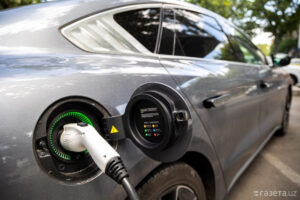
At the end of 2024, for the first time in Uzbekistan, imports of electric and hybrid cars outnumbered traditional gasoline cars. According to the Customs Committee, published by Gazeta.uz, 80,235 passenger cars worth $1.9 billion were imported into the country during the year. At the same time, this is 7% less in quantitative terms (-5,710 units) and 33.1% less in monetary terms (-$632.6 million) compared to 2023.
Imports of cars with gasoline engines decreased by 36.3%, amounting to 32,928 units (compared to 51,699 a year earlier). The cost of imports also decreased significantly – from $1.18 billion to $707.2 million (-40%). The share of gasoline cars in total imports decreased from 64.4% to 44.2%.
Imports of hybrid cars increased by 42%, reaching 17,480 units. Their total value amounted to $339.3 million, which is 17% more than in 2023. The share of hybrids in total imports increased from 15.3% to 23.4%.
Electric vehicles showed even more impressive growth: the number of imported cars increased 1.5 times, from 16,084 to 24,095 units. At the same time, their cost decreased by 48.2% to $224.8 million. The share of electric vehicles in imports increased from 20% to 32.3%.
The average cost of an imported electric car decreased almost threefold, from $26,972 to $9,330 (excluding VAT and customs duties). Hybrid cars also fell in price, but less significantly: the average price dropped by 17.6%, from $23,570 to $19,410. For gasoline cars, the decline was only 6%, from $22,858 to $21,476.
The growing demand for environmentally friendly vehicles is being stimulated by tax and customs incentives. Imports of electric vehicles are exempt from excise duties, customs duties, and road tolls. Taxi drivers using electric and hybrid vehicles are exempt from license fees until 2030. Entrepreneurs are entitled to benefits for the installation of charging stations, which will be introduced in 2023.
In addition, the registration of electric vehicles and hybrids is cheaper than that of gasoline cars. For example, the cost of registering an eco-friendly vehicle is 1.5 BRV, while for gasoline cars it is 6.84 BRV.
Problems with LPG refueling and the high cost of gasoline also contribute to drivers’ switching to electric vehicles. As a result, the share of eco-friendly vehicles in imports reached 55.8% (33,564 units), exceeding the share of gasoline cars (44.2%, 32,928 units).
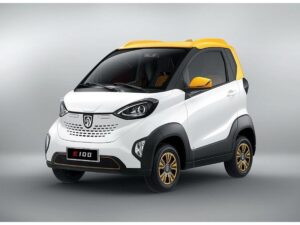
In August, registrations of electric vehicles (new and used) in Ukraine amounted to 6,445 thousand, which is 68% more than in August last year and 36.6% more than in July this year, Ukravtoprom reported on its telegram channel. As reported, in July 2024, the demand for electric vehicles increased by 38% compared to July 2023 and by 14% compared to June 2024.
As reported, market experts attribute this jump in demand for electric vehicles over the past 1.5 months to the government’s initiative to introduce a 15% military tax on car buyers during the first registration, including electric vehicles, which are currently not taxed in Ukraine (except for a small excise tax).
In late August, it was reported that the government had abandoned this initiative.
According to Ukravtoprom, the share of new cars in electric car registrations in August was 18%, the same as a year earlier (21% in July).
The bulk of the electric vehicles registered during the month were passenger cars – 6,302 thousand units (new – 1,159 thousand, used – 5,143 thousand), and only five of 143 commercial vehicles were new.
The top five new electric cars in July were BYD Song Plus – 174 units; Honda M-NV – 169 units; Volkswagen ID.4 – 147 units; ZEEKR 001 – 107 units; Nissan Ariya – 83 units.
The top five used cars were Nissan Leaf – 658 units; Tesla Model Y – 588 units; Tesla Model 3 – 561 units; Hyundai Kona – 308 units; Volkswagen e-Golf – 289 units.
In total, in January-August, more than 35.6 thousand battery-powered vehicles were registered for the first time in Ukraine (79% more than in the same period in 2023), with new vehicles accounting for 20%.
For its part, the AUTO-Consulting information and analytical group also notes a jump in demand for electric cars based on information about military training – according to its data, 1.3 thousand new electric vehicles were sold in August, which was a monthly sales record for the entire period of observation.
“Although the share of the electric car market slightly decreased compared to previous months and amounted to 16%, the absolute number of sales was a record, despite the massive power outages,” the group’s website states.
According to experts, 8.2 thousand new electric vehicles (16.9% of the total car market) were sold in Ukraine in 8 months of 2024, which is 30% more than in the same period in 2023.
As reported, in 2023, according to Ukravtoprom, registrations of new and used electric cars in Ukraine increased 2.8 times to 37.6 thousand, with new cars accounting for 20% compared to 17% a year earlier.